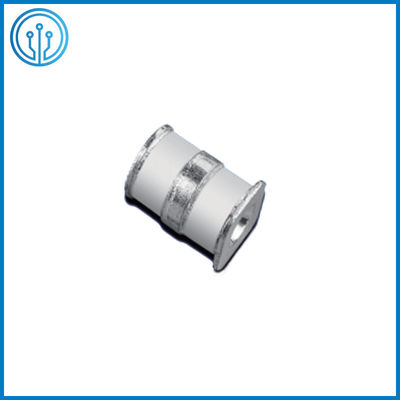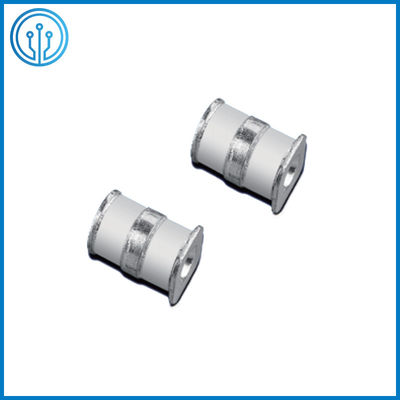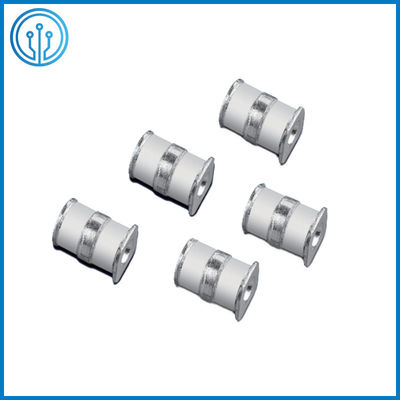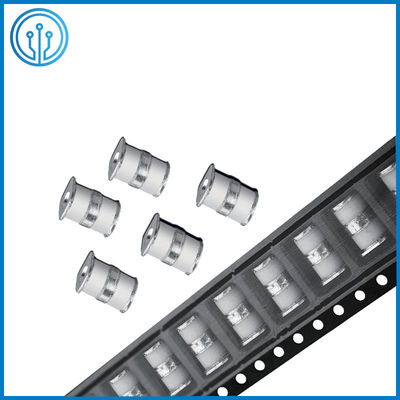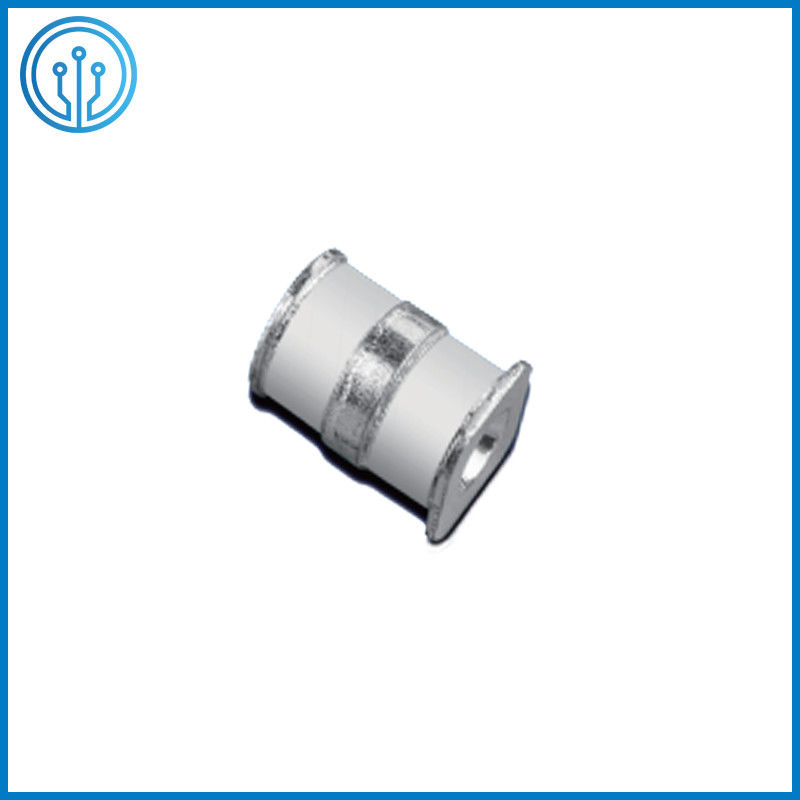5.0x7.6mm Surface Mount 350V Gas Discharge Tube 5KA Glass Discharge Tube
Product Details:
| Place of Origin: | Dongguan,Guangdong,China |
| Brand Name: | AMPFORT |
| Certification: | UL |
| Model Number: | 5TS350L |
Payment & Shipping Terms:
| Minimum Order Quantity: | 1500 Pieces |
|---|---|
| Price: | Negotiable |
| Packaging Details: | Tape,1500pcs per reel |
| Delivery Time: | 7-10 Workdays |
| Payment Terms: | T/T,Paypal, Western Union |
| Supply Ability: | 10,000,000 Pieces Per Month |
|
Detail Information |
|||
| Name: | Ceramic Gas Discharge Tube 5.0x7.6mm 350V 20% 5KA | Size: | 5.0x7.6mm |
|---|---|---|---|
| Mounting Type: | Surface Mount | Spark Over Voltage: | 350V(75~800V) |
| Discharge Current: | 5KA | Electrode Capacitance: | 1.5PF |
| Operating Temp: | -40~+85C | Standard: | ITU-T K.12,GB/T9043-2008 |
| High Light: | 5.0x7.6mm Gas Discharge Tube,Surface Mount 350V Gas Discharge Tube,5KA glass discharge tube |
||
Product Description
2 Electrode Surface Mount Ceramic Gas Discharge Tube 5.0x7.6mm 350V 20% 5KA
What is gas discharge tube ?
Gas-discharge lamps are a family of artificial light sources that generate light by sending an electric discharge through an ionized gas, a plasma. Typically, such lamps use a noble gas (argon, neon, krypton, and xenon) or a mixture of these gases.
Dimension Of The Ceramic Gas Discharge Tube 5.0x7.6mm 350V 20% 5KA (mm)
![]()
Specification Of The Ceramic Gas Discharge Tube 5.0x7.6mm 350V 20% 5KA
| Catalog No. | DC Spark Over Voltage (100v/s)V | Impulse Spark Over Voltage (1kv/μs)V | Insulation Resistance GΩ | Electrode Capacitance 1MHz 0.5V PF | Impulse Discharge Current (8/20μs 10times) | AC Discharge Current (50Hz 1s 10times)A |
| 5TS075L | 75±20% | ≤600 | ≥1 | ≤1.5 | 5KA | 5A |
| 5TS090L | 90±20% | ≤600 | ≥1 | ≤1.5 | 5KA | 5A |
| 5TS150L | 150±20% | ≤600 | ≥1 | ≤1.5 | 5KA | 5A |
| 5TS230L | 230±20% | ≤700 | ≥1 | ≤1.5 | 5KA | 5A |
| 5TS350L | 350±20% | ≤1000 | ≥1 | ≤1.5 | 5KA | 5A |
| 5TS420L | 420±20% | ≤1000 | ≥1 | ≤1.5 | 5KA | 5A |
| 5TL470L | 470±20% | ≤1200 | ≥1 | ≤1.5 | 5KA | 5A |
| 5TS600L | 600±20% | ≤1400 | ≥1 | ≤1.5 | 5KA | 5A |
| 5TS800L | 800±20% | ≤1600 | ≥1 | ≤1.5 | 5KA | 5A |
![]()
How should engineers choose ceramic gas discharge tubes ?
Circuit protection schemes are designed by engineers based on the protection level of the product and the actual working voltage, current and power values. In addition to the scheme design, whether the protection scheme is effective is another important factor-the selection of electronic protection devices. How should engineers choose ceramic gas discharge tubes? The following lightning protection expert AMPFORT Electronics will take the lightning protection device ceramic gas discharge tube as an example to explain the selection of ceramic gas discharge tube in detail.
Ceramic gas discharge tube is currently the most widely used lightning protection device, whether it is lightning protection for AC and DC power supplies or lightning protection for various signals, it can play a good role in protection. The ceramic discharge tube is sealed with ceramic. The inside consists of two or more metal electrodes with gaps, which are filled with inert gas argon and neon. When the voltage applied to the two electrode ends reaches the breakdown of the gas in the gas discharge tube, The gas discharge tube begins to discharge, changing from high impedance to low impedance, so that the surge voltage is quickly short-circuited to close to zero voltage, and the overcurrent is released to the ground, thereby protecting the subsequent circuit.
Selection of ceramic gas discharge tube:
①Under the rapid pulse impact, the gas ionization of the ceramic gas discharge tube takes a certain time (usually 0.2~0.3μ s, the fastest is about 0.1μ s), so a sharp pulse with a higher amplitude will leak to the back . To suppress this spike, there are several methods: a. Connect a capacitor or varistor in parallel with the discharge tube; b. Connect an inductance in series behind the discharge tube or leave a transmission line of appropriate length to make the spike attenuate to a lower level. Level; c. Two-level protection circuit is adopted, with discharge tube as the first level, TVS tube or semiconductor discharge tube as the second level, and the two levels are isolated by resistance, inductance or self-recovery fuse.
②Selection of DC breakdown voltage Vsdc: The minimum value of DC breakdown voltage Vsdc should be greater than the highest possible peak power supply voltage or 1.2 times the highest signal voltage.
③Selection of impulse discharge current: It should be selected according to the maximum surge current that may appear on the line or the maximum surge current that needs to be protected. The impulse discharge current of the discharge tube should be calculated according to the nominal impulse discharge current (or half of the single impulse discharge current)
④ Ceramic gas discharge tubes are generally not used in parallel due to the large breakdown voltage error.
⑤Freewheeling problem: In order to make the discharge tube can normally extinguish the arc after the impact breakdown, in the place where freewheeling may occur (such as in an active circuit), a varistor or resettable fuse can be connected in series with the discharge tube. Freewheeling makes it smaller than the sustaining current of the discharge tube.
Welcome to consult us through the official website! We will serve you wholeheartedly!




